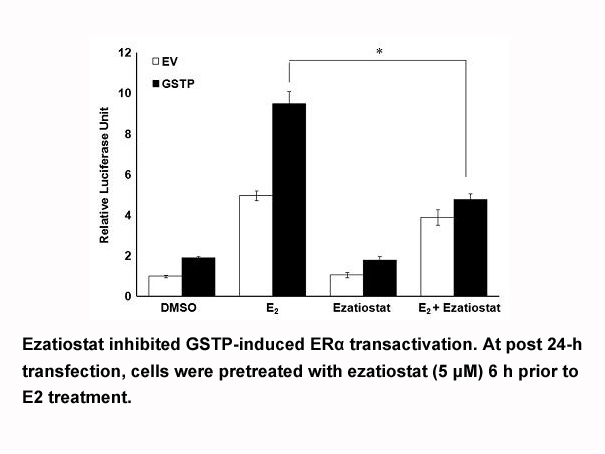Archives
Given the profound expression of HT A and HT A
Given the profound bestatin of 5-HT1A and 5-HT2A in the hippocampal CA1 region, and their potential to complex with mGluRs, the objective of this study was to examine if sleep deprivation alters the expression of 5-HT1A and 5-HT2A receptors and determine whether potential changes are reversible post sleep recovery for 24 or 48h. The possibility of 5HT1A-mGluR1α and 5HT2A-mGluR1α heterodimerization was also studied in addition to the effects of applied 5-HT on excitatory synaptic transmission in normally sleeping (NS), sleep deprived (SD) and sleep recovery (SR) conditions.
Materials and methods
Male Wistar rats aged 21–28days were purchased from the Animal Care Centre, The University of British Columbia. All procedures were performed in accordance to the guidelines of the Canadian Council on Animal Care and the University of British Columbia committee on Animal Care.
Results
Discussion
Activation of 5-HT receptors, depending upon the loci of their expression, pyramidal cell vs. interneuronal and/or pre vs. post-synaptic [10], seem to either excite [1], [2] or inhibit [2], [4] neurons. There is a general consensus, however, that 5-HT exerts inhibitory actions on the CA1 pyramidal neurons, thereby decreasing their output [10]. Since serotonergic projections in the hippocampus are diffuse in nature [27], local effects of 5-HT are largely dependent on, 5-HT concentration, presence or absence of the individual 5-HT receptor subtypes and the density of 5-HT receptor expression [9]. The enhanced suppressive effect of applied 5-HT (1–40μM) on pEPSPs recorded from CA1 pyramidal neurons in SD rats, could therefore, be related to the increased 5-HT1A receptor expression, especially since these receptors possess the highest affinity for 5-HT [10]. It is interesting that while the increased effect of applied 5-HT in SD rats subsided in animals that underwent a 24h sleep recovery, the expression of 5-HT1A receptors was still enhanced in the 24h sleep recovery group. One reason for this discrepancy could be the potential interaction of 5-HT1A receptor with other 5-HT receptors subtypes. For instance, 5-HT1A receptors are known to heterodimerize with 5-HT7 receptors [29]. Such interactions seem to affect the trafficking and signaling properties of 5-HT1A receptors [32]. It is not clear, however, as to how sleep deprivation influences this process and detailed studies are needed to examine the “dynamic inte ractions” of various 5-HT subtypes. Furthermore, as better subtype specific agonists and antagonists become available, some of these issues could be addressed with greater clarity [36]. Nevertheless, given that 5-HT1A receptors are among the primary targets for combating various affective disorders [6], an increase in receptor expression, as found in our study, is likely to have significant pharmacological and/or behavioral implications.
Selective serotonin reuptake inhibitors (SSRIs) are widely prescribed for their anti-depressive actions. They act by elevating synaptic levels of 5-HT by preventing reuptake [35]. Since serotonergic projections in the cortico-limbic regions are under strict inhibitory control of the somatodendritic raphe 5-HT1A autoreceptors, SSRIs reliably elevate synaptic 5-HT levels in projection sites only after a few weeks of treatment, usually the time needed to desensitize and disinhibit these receptors [8]. When an immediate therapeutic effect is desired, interestingly, a one night sleep deprivation is sometimes recommended [15], [17]. Like SSRIs, sleep deprivation modulates the 5-HT system to produce anti-depressive effects [14], [17], [30]. This effect is short lasting, as the elevation in 5-HT levels is transient [17], [30]. Our present results also corroborate this view, as 5-HT1A receptor expression is only briefly enhanced. A 48h sleep recovery is sufficient to downregulate receptor expression towards control levels. Sleep deprivation, however, is associated with behavioral after effects, such as,
ractions” of various 5-HT subtypes. Furthermore, as better subtype specific agonists and antagonists become available, some of these issues could be addressed with greater clarity [36]. Nevertheless, given that 5-HT1A receptors are among the primary targets for combating various affective disorders [6], an increase in receptor expression, as found in our study, is likely to have significant pharmacological and/or behavioral implications.
Selective serotonin reuptake inhibitors (SSRIs) are widely prescribed for their anti-depressive actions. They act by elevating synaptic levels of 5-HT by preventing reuptake [35]. Since serotonergic projections in the cortico-limbic regions are under strict inhibitory control of the somatodendritic raphe 5-HT1A autoreceptors, SSRIs reliably elevate synaptic 5-HT levels in projection sites only after a few weeks of treatment, usually the time needed to desensitize and disinhibit these receptors [8]. When an immediate therapeutic effect is desired, interestingly, a one night sleep deprivation is sometimes recommended [15], [17]. Like SSRIs, sleep deprivation modulates the 5-HT system to produce anti-depressive effects [14], [17], [30]. This effect is short lasting, as the elevation in 5-HT levels is transient [17], [30]. Our present results also corroborate this view, as 5-HT1A receptor expression is only briefly enhanced. A 48h sleep recovery is sufficient to downregulate receptor expression towards control levels. Sleep deprivation, however, is associated with behavioral after effects, such as,  increased irritability, fatigue and discomfort, which reduce its effectiveness in treating depression [31], [39]. As around-the-clock lifestyle becomes increasingly common in our 24×7 society, it is important to know how frequent sleep interruptions affect the 5-HT system. Any long term alterations in receptor sensitivity and/or the functioning of the 5-HT system, is likely to influence the therapeutic effectiveness of SSRIs and other related drugs.
increased irritability, fatigue and discomfort, which reduce its effectiveness in treating depression [31], [39]. As around-the-clock lifestyle becomes increasingly common in our 24×7 society, it is important to know how frequent sleep interruptions affect the 5-HT system. Any long term alterations in receptor sensitivity and/or the functioning of the 5-HT system, is likely to influence the therapeutic effectiveness of SSRIs and other related drugs.